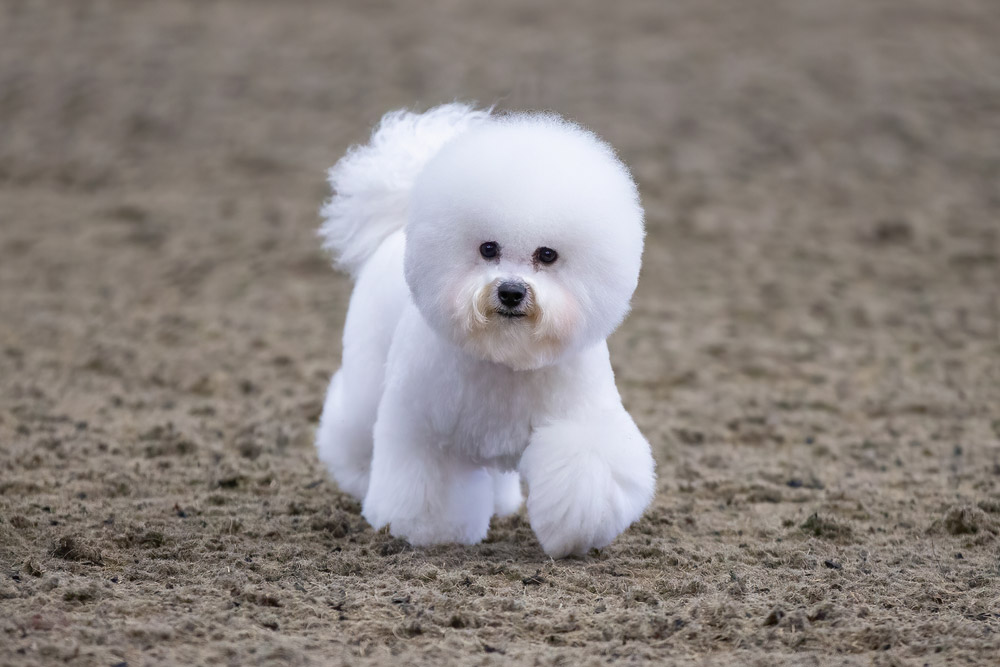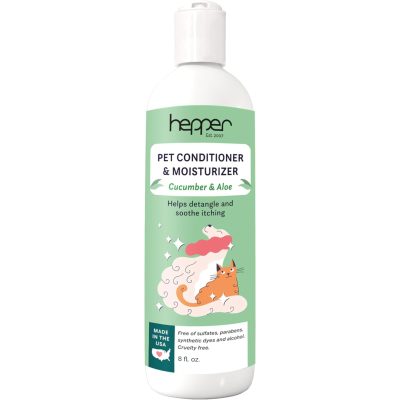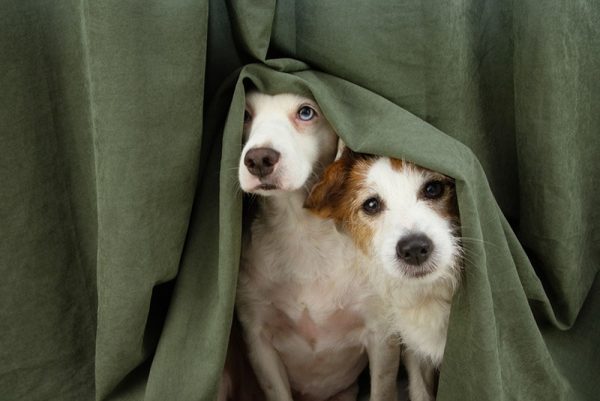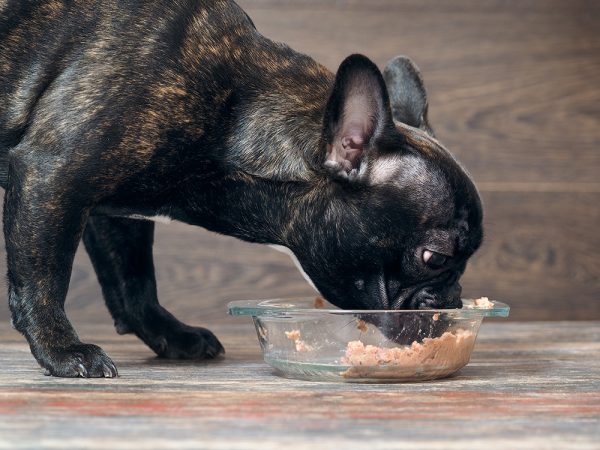In this article
Bichon Frises are known for their unique genetics and we’re going to uncover the secrets behind their mesmerizing coat patterns. From the classic white coat to the striking combinations of apricot, silver, and cream, each Bichon Frise unveils a palette of colors that will leave you in amazement. So, if you’re an enthusiast or simply curious about the fascinating intricacies of canine genetics, join us on this journey as we unravel the dazzling colors and patterns of the Bichon Frise. Prepare to be amazed!

The Genetics Behind Coat Color and Patterns in Bichon Frises

The colors and patterns of a Bichon Frise’s coat are determined by their genetics. Canines have two copies of each gene, one inherited from each parent. These genes contain the instructions for producing melanin, the pigment responsible for coat color. So, there are actually two types of melanin in canines: pheomelanin, which produces yellow and red colors and eumelanin, which produces brown, gray, and black colors.
The genes involved in coat color and patterns are complex, with multiple genes interacting to produce the final result. For example, the gene responsible for the white color in Bichon Frise is known as the “S” gene. Dogs with two copies of the “S” gene will actually have a white coat, while those with one copy will have a colored coat with white markings. Understanding these genetics can help breeders predict the colors and patterns that will appear in a litter of Bichon Frise puppies.

Common Coat Colors in Bichon Frises
1. White

The most common coat color in Bichon Frise is white. These dogs have a beautiful, fluffy white coat that gives them their signature appearance. The white color in Bichon Frise is often the result of the “S” gene as mentioned earlier, which produces a lack of pigment in the hair, giving the hair a white color.
2. Cream and White

Cream is another common coat color in these dogs. Cream-colored dogs have a pale, creamy coat that is slightly darker than white. This color is produced by a combination of the “S” gene and other genes that influence the intensity of the color.
3. Apricot and White

Apricot and white is a slightly rarer coat color in Bichon Frise. These dogs have a white coat with warm, golden patches on their ears and face that range from a light apricot to a deep, rich shade. And like cream, the apricot color is influenced by the “S” gene and other genes that affect the intensity of the color.

Coat Patterns in Bichon Frises
In addition to their beautiful colors, Bichon Frise can also exhibit various coat patterns. Let’s look at some of them.
4. Solid

One of the most common patterns in Bichon Frises is a simple solid pattern, where the dog’s coat is a single, uniform color. Solid-colored Bichon Frise can be seen in white or cream.
5. Parti
Another popular coat pattern in Bichon Frise is the party pattern. Parti-colored dogs have a base color of white with patches of cream or apricot. The patches can be of any size and can appear in different patterns on the dog’s body. Parti-colored Bichon Frises are often considered quite striking and unique, as their coat pattern creates a contrast between the base color and the white patches.
6. Ticking
Ticking is another interesting coat pattern that can be seen in the Bichon Frise. Dogs with ticking have small flecks or spots of color on their white coats. These flecks can be almost invisible or quite prominent, depending on the individual dog.

Unique Coat Variations
While the solid, parti, and ticking patterns with white, cream, and apricot are the most commonly seen in Bichon Frises, there are also some unique coat variations that can appear in these adorable pups.
7. Black
Black is a rare and unique coat color in this breed, and if you see a Bichon Frise that is black, it is likely a mixed breed and not a purebred Bichon. The coat may be solid black or have white patches on it as well.
8. Chocolate

Another rare coat color in these dogs is chocolate. These dogs have a rich, dark brown coat that is often referred to as “chocolate” due to its resemblance to the color of chocolate. Again, this is likely not a purebred Bichon but a mixed breed. The chocolate color is produced by a specific gene that affects the production of eumelanin, the pigment responsible for black and brown colors.
9. Sable
One unique pattern variation is the sable coat, and again, the dog is likely not a purebred Bichon if this pattern is present. Sable-colored Bichon Frises have a base color that is overlaid with darker hairs, creating a beautiful, multi-toned effect (which is usually shades of brown and tan). The sable variation is often associated with specific genes that affect the distribution of pigment in the hair.
10. Brindle
Brindle is another unique coat variation that can be found in Bichon Frise mixes. These dogs have a base color with darker stripes or streaks running through it – almost like a tiger, but the stripes are less pronounced. This creates a striking and eye-catching pattern that is quite different from the solid or parti patterns.
11. Merle
Merle is a fascinating coat variation that is characterized by a seemingly random marbled or mottled appearance. Merle-colored Bichon Frise mixes have a base color with patches or spots of a lighter or darker shade.
When owning one of these adorable little fluff balls, you’ll quickly learn that their luxurious coats require special attention and care. So, let’s look at how to keep their coats in tip-top shape.

Grooming the Bichon Frise Coat
To properly care for your Bichon’s coat, it’s important to invest in the right grooming tools. A slicker brush is a must-have for removing tangles and mats, while a comb with wide and narrow teeth will help you work through different parts of the coat. Also, a pair of grooming scissors with rounded tips will be handy for trimming and shaping the hair around sensitive areas such as their eyes and paws. And lastly, don’t forget to get some high-quality dog shampoo and conditioner specifically formulated for Bichon Frises to keep their coat clean and healthy.
Now that you have the necessary tools, let’s dive into the step-by-step process of grooming your Bichon Frise.
1. Brush the Coat

Start by brushing your dog’s coat thoroughly to remove any tangles or mats. Use the slicker brush in gentle, short strokes, working from the roots to the tips of the hair. Be sure to pay extra attention to areas prone to matting, such as the ears, armpits, and tail. If you encounter any mats, use the comb to gently tease them apart or, if necessary, carefully cut them out with the grooming scissors.
2. Give Them a Bath
Once your Bichon’s coat is tangle-free, it’s time for a bath. Use lukewarm water and wet your dog’s coat thoroughly. Apply a small amount of dog shampoo and work it into a lather, making sure to reach all areas of the coat. Be extra careful around the eyes and ears, using a damp cloth to clean these areas instead of shampoo. Rinse your Bichon’s coat thoroughly, making sure to remove all traces of shampoo. Apply the conditioner and leave it on for a few minutes before rinsing again.
Our Favorite Products Selecting the right shampoo and conditioner makes the world of a difference when grooming your pup. Our favorite products are the duo by Hepper. The Oatmeal Pet Shampoo is formulated with aloe and oatmeal to soothe skin and hydrate the coat. The Pet Conditioner works at eliminating tangles and taming frizz and static. Both products are pH-balanced and formulated with pet-friendly ingredients, free of harsh soaps, chemicals, and dyes. Give this duo a try to heal and nourish your dog's coat, and leave them with an irresistible just-left-the-spa cucumber and aloe scent. At Dogster, we’ve admired Hepper for many years and decided to take a controlling ownership interest so that we could benefit from the outstanding designs of this cool pet company!
Image
Product
Details

Hepper Oatmeal Pet Shampoo
Check Price

Hepper Pet Conditioner
Check Price
3. Dry Them Off
After the bath, gently towel dry your dog and use a blow dryer on a low, cool setting to finish the drying process. Be patient and avoid using high heat, as it can damage the hair and cause discomfort for your dog. Once your Bichon’s coat is completely dry, it’s time for the final step: trimming. Use the grooming scissors to shape the hair around the eyes, ears, paws, and tail. Take your time and be cautious, making small snips to achieve the desired look. And boom, you’re all done.


Tips to Prevent Matting and Tangles
Prevention is key when it comes to avoiding matting and tangles in your Bichon Frise’s coat. Regular brushing is essential to keep the hair tangle-free. Aim to brush your Bichon at least three times a week, or even daily if their coat is prone to matting – something common in dogs that are outdoors a lot. Start by using the slicker brush to remove any tangles and then switch to the comb to ensure all knots are gone. Be gentle and patient, as pulling or tugging at the hair can be uncomfortable for your dog.
Trimming the hair around the ears, paws, and tail will also help prevent matting. These areas are particularly prone to tangling due to friction and moisture. So, by keeping the hair shorter in these areas, you can actually reduce the risk of mats forming. Regular baths using a quality dog shampoo and conditioner will also contribute to a healthy coat and minimize tangles. Remember to thoroughly rinse out all shampoo and conditioner residue, as any leftover product can lead to static and tough matting in their thick coats.
Don’t Dos When It Comes to Grooming a Bichon Frise
While grooming your Bichon Frise, it’s important to be aware of common mistakes that can negatively impact their coat. One common mistake is using the wrong grooming tools. Avoid using brushes or combs with sharp or rough bristles, as they can cause discomfort and potentially damage the hair. Stick to brushes and combs specifically designed for Bichon Frises, and always opt for rounded tips on grooming scissors to prevent accidental cuts.
Another mistake is neglecting regular grooming sessions. Bichon Frises require consistent care to keep their coat in top shape. Skipping brushing sessions or going too long between baths can lead to matting and other coat issues. Make grooming a regular part of your routine to prevent any problems from arising.

The Role of Lifestyle in Coat Health
In addition to regular grooming, there are a few tips and tricks you can follow to keep your Bichon Frise’s coat looking healthy and shiny. A balanced diet plays a crucial role in your dog’s overall coat condition, so make sure they are getting high-quality dog food that provides all the essential nutrients. Omega-3 fatty acids, found in fish oil supplements or certain foods like salmon, can help promote a healthy coat.
Regular daily exercise is also important for maintaining a healthy coat. These small dogs only need about 30 minutes a day. Physical activity improves blood circulation, which in turn promotes the growth of healthy hair. A well-exercised Bichon Frise is more likely to have a shiny and lustrous coat. And lastly, make sure your dog has access to fresh water at all times, as dehydration can affect the quality of their coat.
Professional Grooming vs. DIY Grooming
Deciding whether to take your Bichon Frise to a professional groomer or groom them yourself is really a personal choice. Yes, professional groomers have the expertise and experience to handle grooming tasks with precision, ensuring your dog looks their best. They also have access to specialized equipment that may not be readily available to the average pet owner. However, professional grooming can be costly and may require scheduling appointments in advance, especially if you live in a big city.
On the other hand, if you have the time and patience to groom your Bichon Frise yourself, it can actually be a rather fun and cool bonding experience. By grooming your pup at home, you have full control over the process and can tailor it to your dog’s individual needs. DIY grooming also allows you to save money in the long run, as you won’t have to pay for regular grooming appointments. Just make sure to educate yourself on proper grooming techniques and invest in the necessary tools to ensure a successful at-home grooming session. You can find tons of videos on YouTube on how to do it correctly.

Wrapping Things Up
So, as you can see, the Bichon Frise comes in a wide variety of beautiful coat colors and patterns, which explains why these amazing dogs are so beloved. However, their coat does require regular maintenance and you’ll either need to seek the services of a professional dog groomer or purchase the necessary tools for grooming and do this all on your own. But at a minimum, remember to brush your Bichon regularly to prevent matting and tangles, and give them regular baths using dog-specific shampoo and conditioner. Your dog will definitely be grateful!
See also:
Featured Image Credit: Vojce, Shutterstock




















